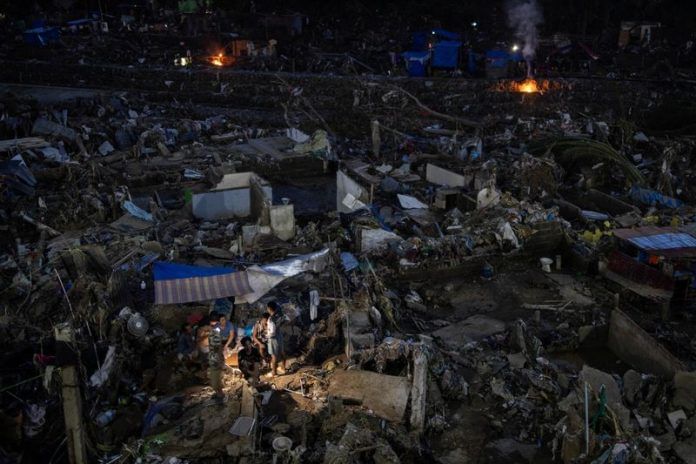By Minh Nguyen
HOI AN, Vietnam (Reuters) -Typhoon Kalmaegi slammed into Vietnam on Thursday, forcing authorities to cancel hundreds of flights and order people to stay indoors, two days after the storm started sweeping across the Philippines, killing at least 114 people.
Kalmaegi – packing winds of up to 149 kph (93 mph), according to the national weather forecaster – blew roofs off houses and downed trees and telegraph poles. It whipped up waves as high as 10 metres (30 feet) as it hit the central region’s coast, the agency added.
Officials closed six airports and the government said more than 260,000 people in Gia Lai province had been moved to safety. Kalmaegi is the 13th storm to hit Vietnam this year, and among the most powerful.
The government said it had placed more than 268,000 soldiers on standby for search and rescue operations. It warned of floods in low-lying areas and impacts on agriculture, including in the Central Highlands, the main coffee-growing region.
FARMERS FEAR FOR CROPS
As the storm approached, hotels and homes along Cua Dai beach near the ancient UNESCO-listed town of Hoi An were shuttered.
Near the coastal city of Hue, farmers were still recovering from floods this week that killed 47 people.
Rice farmer Nguyen Van Rin, 42, said the last floods had drowned his livestock and poultry. “Kalmaegi will flood us for the fourth time and I am afraid it will be quite bad,” he said after guiding his boat across a road as vehicles moved slowly through the water.
HOMES FLATTENED, VEHICLES OVERTURNED
In the Philippines, the scale of the Kalmaegi’s destruction became clearer on Thursday as floodwaters receded in its hardest-hit province of Cebu, revealing flattened homes, overturned vehicles and streets choked with debris.
There were 127 people still reported missing as of late on Thursday and attempts to distribute aid and find bodies were hampered by the scale of the damage left by Kalmaegi, the 20th storm to hit the Philippines this year.
“The challenge now is debris clearing … These need to be cleared immediately, not only to account for the missing who may be among the debris or may have reached safe areas but also to allow relief operations to move forward,” Raffy Alejandro, a senior civil defence official, told DZBB radio.
The typhoon’s devastation in Cebu comes just over a month after a magnitude 6.9 earthquake struck the holiday island, killing dozens and displacing thousands.
Forecasters were also tracking a brewing storm east of the Philippine island of Mindanao that could strengthen into a typhoon and hit the country early next week.
‘MY CHILDREN HAVE NOTHING’
Some people in Cebu returned to find their homes destroyed on Thursday, while others started the arduous cleanup, scraping mud from their houses and streets.
“Everything was destroyed. Only the flooring remained. Everything was washed out. We have no belongings,” said Liza Becus as she returned to what was left of the shack she had built in Talisay City in Cebu.
She gathered metal and iron sheets to sell so she could buy rice to feed her seven children.
“My children have nothing,” she said. “Their uniforms, bags, and all of our things are gone.”
(Reporting by Minh Nguyen and Thinh Nguyen in Hoi An, Vietnam, Adrian Portugal and Eloisa Lopez in Cebu, Philippines, Phuong Nguyen and Khanh Vu in Hanoi; Writing by Karen Lema and Martin Petty; Editing by John Mair and Andrew Heavens)
Disclaimer: This report is auto generated from the Reuters news service. ThePrint holds no responsibility for its content.






